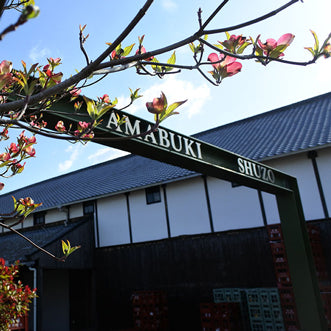
On my recent trip to Japan, with my daughter in tow, I was able to confirm a few things about shochu: that while drinking it with soda is all the rage, I still love an oolong-hi, especially in the summer heat, and it continues to be my drink of choice (although a Kaku whisky highball would be a close second). I mostly ordered oolong-hi’s, a tall glass of dark tea filled with ice and a nameless shochu, because it’s what I could order at any child-friendly restaurant – the yakitori shop, Cafe Gusto, the local kaiten sushi spot (for excellent conveyor belt sushi). There was only one izakaya in our Tokyo Airbnb neighborhood serving premium shochu, and I had to point at it and inquire after it specifically. The master seemed both delighted and confused and asked me, “do you know shochu?” as though there was a secret password.
This is all to say that shochu is still very specialized in Japan. Grocery stores generally only carry one or two brands from major distilleries, and you really have to seek out restaurants with any shochu list at all. I went on a hunt to look for my favorite bottles to bring back to our bar and finally found them at a liquor shop two train stations away.
Clearly, honkaku shochu is not the norm even in Japan, and we are incredibly lucky
to be able to find such magnificent, small batch, handmade bottles here in the States. I don’t take it for granted as I continue to seek rare, high quality shochus for our club – both distilleries from this quarter’s selections attribute koji-making as the most important step in the shochu production process. It is indeed the koji that continues to put shochu in such a unique category on the world’s stage of spirits.
 Making shochu by hand at Takahashi Shoten. Photo courtesy of Jake Tennenbaum.
Making shochu by hand at Takahashi Shoten. Photo courtesy of Jake Tennenbaum.
Kanpai,
Kayoko
+++
Hozan Jyosen Tama Akane Sweet Potato Shochu
Nishi Shuzo (Fukiage, Kagoshima) Nishi Shuzo (Fukiage, Kagoshima)
Distilled from locally grown Tama Akane sweet potato / ABV: 25%
Koji: White / Distillation: Atmospheric / Aged in stainless steels tanks for 6 months
Shochu Gumi Exclusive!
 Different sweet potato varieties grown for Nishi Shuzo. Photo courtesy of the distillery.
Different sweet potato varieties grown for Nishi Shuzo. Photo courtesy of the distillery.
Who else was obsessed with the shochu made with Tama Akane sweet potatoes that I featured last year in the club? I went on a hunt to look for other shochus like it and special ordered this one just for the club! This bottle is the fourth in a series of bottles by Nishi Shuzo (who you may know as maker of the famous Tenshi No Yuwaku) highlighting different single-variety sweet potatoes, and adjusting its soil environment to bring out its maximum flavors. Bright orange in color, the Tama Akane potato is high in beta carotene and is known to be difficult to steam so yield is low.

Tama Akane sweet potato. Photo courtesy of Nishi Shuzo.
This shochu actually pairs really well with all kind of teas, not just oolong, thanks to the rich tea aromas of the shochu. There are excellent notes of bergamot (Earl Gray) but I also got the salinity of sencha on the tailend.
Tasting Notes: Pear, tea, kiwi fruit
Food Pairing: Uni, mimolette cheese, Yoko’s Niku Miso Udon recipe on our blog.
How to Drink: with any iced tea (I loved it with sencha, but great with Assam or hojicha).
New Trick! I learned in Japan at our neighborhood izakaya in Daitabashi. Warm up the shochu in a tokkuri and pour over a glass of ice. This unlocks the complex aromas that steam up from the cup.
+++
Shigemasu Kasutori Shochu Shigemasu Kasutori Shochu
Takahashi Shoten (Yame, Fukuoka)
Distilled from 100% daiginjo sake lees / ABV: 30.5% / Koji: Yellow
Distillation: Vacuum / Aged in enamel tanks or in 1.8L glass bottles for one year
I’m excited for this bottle as it’s made with yellow koji! Since 1717, Takahashi has been a sake brewery in Kyushu in an area well known for rice farming. This is the only shochu that they make using sake kasu from their daiginjo and ginjo sakes, and it is no wonder they use yellow koji as that’s what sake is made with (usually shochu is made with black or white koji). They prize their handmade koji-process as they used to be a koji shop, selling koji to other breweries around town.

A bustling day at Takahashi Shoten. Photo by Jake Tennenbaum.
Yuko Nonaka of Honkaku Spirits (the importer of this bottle) told me, "During the koji-making process they use the Futa Koji Method—a traditional technique. A kojibuta is a box-like tool used for dividing the warmed rice koji into smaller portions, a step known as "mori."
 Koji ready to make shochu. Photo courtesy of Jake Tennenbaum
Koji ready to make shochu. Photo courtesy of Jake Tennenbaum
 Airing out the tanks at Takahashi Shoten. Photo courtesy of the brewery.
Airing out the tanks at Takahashi Shoten. Photo courtesy of the brewery.
I’ve loved my nightly ritual of cooking while sipping on a Shigemasu Soda – the higher ABV really comes through!
Tasting Notes: Marshmallows, daiginjo sake, saltwater taffy
Food Pairing: “Chee-tara” fish + cheese snack, Macanese-style Portugese
Chicken in Saveur Magazine
How to Drink: On the rocks or with soda




Comments (0)
There are no comments for this article. Be the first one to leave a message!